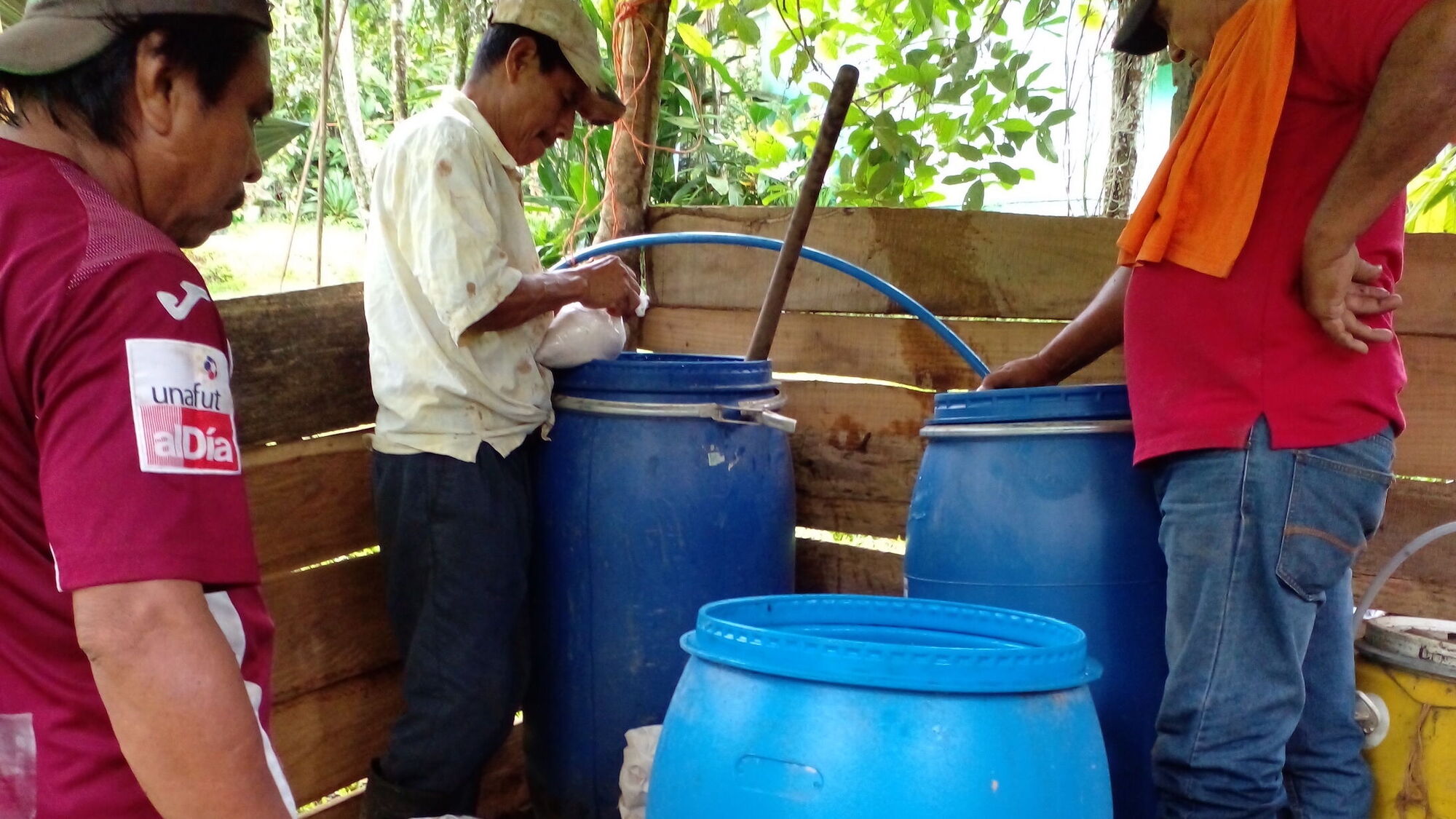Improve livelihoods of indigenous organic and fairtrade farmers
What the project was about
The very humid climate in upper Talamanca, Costa Rica, favors the growth and propagation of fungal diseases such as Monilia and Phytophthora. Especially in old cocoa trees, a large part of the pods go bad before they are ripe. As a result, farmers often abandon their trees because it is not worthwhile to maintain them. In addition, many years of harvesting organic cacao and banana depending only on natural nutrient cycling has reduced soil fertility and therefore has contributed to declining productivity in recent years.
What was done
The project aimed to foster farmers‘ skills in cocoa tree management in order to increase the harvest of organic cocoa and, in the end, the farmers’ income. To achieve this, the project did the following:
- Distribution of productive and disease-tolerant cocoa varieties (CATIE) among the farmers, supplied by the local nursery established in an earlier phase of the project.
- Hands-on training of farmers in vegetative propagation of the newly received cocoa varieties or their existing plants to rejuvenate and increase the total number of cocoa plants on their parcels.
- Village-level training in the production, maintenance and application of organic low-cost fermented bio-fertilizers.
What the project achieved
Over the course of the three years of the project,
- More than 30’000 cocoa plants were grafted and established in existing cacao parcels to replace old, unproductive or dead trees, or to set up new parcels nearby.
- Nearly 100 farmers have learned and adopted the practice of grafting cocoa plants and are aware of the changes in pruning methods compared to non-grafted trees.
- In six out of the ten communities, small installations for producing fermented bio-fertilizer were established and the fertilizer is widely used for both cocoa and other crops.
At the end of the project, the farmers already observed improvements in terms of tree health and productivity, which they attributed to the bio-fertilizer, the new varieties, and their newly acquired management skills. Also, as farmers realized an improvement of their cacao is possible, many of them gained new motivation to work in their cacao fields.

Five or six years ago, we planted a cocoa tree on the off chance. Either we were lucky and the plant gave a lot of fruit. Or we were unlucky, and there was no yield. With the new cocoa varieties and cultivation techniques, we no longer have this problem. Every seedling planted that grows big also gives a lot of fruit.
What didn’t work or had unintended consequences
Originally, the project was planned to last only two years and was meant to be carried out not only in Costa Rica but also Panama. However, implementation in Panama was not possible since the local cooperative did not provide enough capacities to carry out the trainings. In addition, the initial cooperation with Kooperativen ohne Grenzen – Cooperativa Sin Fronteras (CSF) from Germany was discontinued since the organisation closed down its office in San José.
In Costa Rica, due to extensive COVID-19 restrictions, the group trainings had to be largely replaced by individual farm visits. This made it necessary to extend the project by one year, which was financed by the omitted expenses in Panama. In fact, this working one-to-one made the project in Costa Rica more effective and the extension allowed to see its impacts in a longer term.
Interview with Chocolat Stella Bernrain about the project
Monica Müller (CEO), in what ways were the project’s approaches new and innovative?
The techniques in which the farmers were trained are generally not new. Nevertheless, our approach was innovative as the propagation of cocoa plants and the production of the fertilizer took place at village and farm level rather than at centralised nurseries.
What has Chocolat Stella Bernrain learned through the project?
We learned a lot about propagation and grafting techniques, for example that cleft grafting is much more successful compared to patch grafting. For future projects, we can draw on that knowledge. We also realised that we didn’t invest sufficiently in infrastructure like shade cloths and water collection at the farm-based nurseries. This is another important lesson learned to make future projects more efficient.
What do you recommend to other stakeholders implementing similar projects?
We suggest to involve the local partner organizations from the very beginning in the selection of the project participants – the communities and farmers –, since it is important that they have a say and enough time to select the participants. Also, we suggest to choose the staff or field team carefully, as a successful project implementation depends largely on them.
What are the next steps?
Our collaboration with APPTA continues, meaning that we regularly buy their cocoa. For now the project is left to its momentum. In one to two year we will assess how the project has developed. Are farmers still using the fermented biofertilizers and the improved varieties? Have more farmer adapted the new improved practices? Based on this evaluation, we will decide how to move forward to support long-term sustainability of the project activities.
How is it ensured that the project has not only short-term, but long-term effects?
This is ensured as the project focused mainly on knowledge dissemination and on practices that allow farmers to improve their production with limited resources. Farmers know how to propagate cocoa plants and can draw on that knowledge for many years to come. With the bio-fertilizers, it is similar: The farmers can produce it by using locally available, low-cost ingredients, except for some of the minerals that need to be purchased. We hope APPTA will support the farmers with occasional technical and logistical support if necessary, in addition to buying their cocoa and other crops as usual.
Video from Chocolat Stella Bernrain about the project (German only)
Organisations involved

